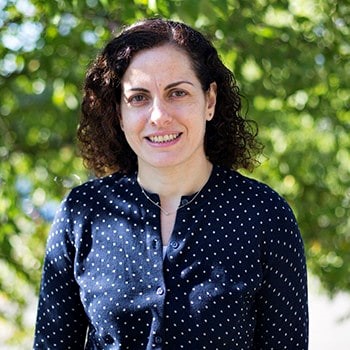Walbridge construction company makes jobsite safety a top priority on all their projects, including their two active jobs on U-M’s North Campus. Students on the Walbridge team will develop a Proximity Warning Alert System (PWAS) that detects people, rather than objects, in the blind spots of mobile construction equipment.
Abstract:
Walbridge is an ENR Top 50 Construction Company that desires to lead their industry in providing innovative solutions to protect workers from being struck in incidents involving mobile construction equipment with blind spots. Our #1 Core Value is Safety: “Think, demand and deliver safety in all aspects of our business.”
Struck-by injuries are the leading cause of nonfatal injuries, and the second most common cause of fatalities among construction workers, costing over $1.7 billion in workers compensation costs in 2016. These injuries occur when a worker is struck by a moving vehicle, equipment, or by a falling or flying object.
Challenges with currently-available technology include false alarms, reliance on operator behavior change, ability to collect data and trends on interactions, and ease of installation.
Students on this team will develop a Proximity Warning Alert System (PWAS) that detects people, rather than objects, in the blind spots of mobile construction equipment. They will utilize the rough prototype developed by the 2023 MDP team, and extend it to a wider range of equipment and use cases. The PWAS will optimize the human and technology interface into normal behaviors and operations. Typical equipment to use the PWAS are telehandlers, articulated lifts, front-end loader/excavators and, other mobile equipment with significant blind spots moving near people. Solutions may include combinations of blind spot cameras, infrared, LIDAR, time of flight, sonic, radar sensors, etc. and computer vision integrated with sensor data.
Impact:
The impact of an improved safety system is the reduction of injuries and fatalities among construction workers.
Scope:
Minimum Viable Product Deliverable (Minimum level of success)
- Document the capabilities of current prototype, other technology solutions, evaluate user needs, and most impactful use cases
- Extend the solution concepts to new equipment and more complex use cases (e.g., low light)
Expected Final Deliverable (Expected level of success)
- Deliver a refined PWAS prototype that is robust for use in the field
- Validate the prototype by testing in a live construction environment
- Demonstrate that the prototype is feasible on a wide variety of equipment
- Provide a roadmap for further development into a minimum viable product for the construction industry
Stretch Goal Opportunities: (High level of success)
- Equipment operators and workers willingly adopt and prefer use of the prototype PWAS
- Prototype PWAS is proven effective for a wide range of mobile equipment with blind spots
- Student-designed PWAS is implemented as new industry standard for reduction of struck-by incidents
General Programming (2-3 Students)
Specific Skills: Creation of integrated system (front end, back end, database, UI, and hardware)
EECS 281 (or equivalent) is required
Should be interested in learning techniques of Machine Vision implementation
Likely Majors: CS, DATA
Computer Vision (2-4 Students)
Specific Skills: Implementation and tuning of computer vision algorithms, integration with vision hardware
EECS 281 (or equivalent) is required
Students should be co-enrolled or have completed coursework or applied project work in Machine/Computer Vision
Likely Majors: CS, ROB
Occupational Safety / Human Factors (1-2 Students)
Specific Skills: Industrial Health and Safety process, human factors design, design for safety
Students should be prepared to participate in technical development of the tool
Likely Majors: KINES, PUBHLTH, IOE
Additional Desired Skills/Knowledge/Experience
- Experience/interest with occupational safety regulations (e.g., OSHA)
- Demonstrated success in team-based project work
- Practical design/build experience based in sensors and camera hardware
- Experience developing computer vision-based decision systems
- Studying construction management (in addition to one of the technical roles above) a strong plus
- Prior construction experience or military service a plus
Sponsor Mentor

John Jurewitz
Director of Innovation
Over his 37-year career, John has planned, designed, and built some of the most innovative technological solutions for the construction industry. Currently, John serves as a leader for innovation at Walbridge, where he focuses on expanding the company’s operational excellence by configuring, adapting, and deploying advanced technologies. From AI-powered location sensors that track workers and equipment, to digital big rooms that utilize collaborative project management systems, John’s work consistently increases productivity and safety while reducing risk.
Executive Mentor

Eric Twigg
Senior Vice President, Walbridge Innovation and Improvement Leadership
Over his 42 years with Walbridge, if there’s a department at Walbridge that Eric Twigg hasn’t run, it hasn’t been created yet – and Eric will probably be the person who starts it. Throughout his career, he’s led (and often created) virtually every department at Walbridge. Current responsibilities include leading the teams for: New Technology, Innovation, DEI, Quality/Lean, Training, Strategy and Leadership Planning support for all Business Units.
Faculty Mentor

Carol Menassa
Associate Professor and John L. Tishman CM Faculty Scholar, Civil Engineering
Professor Menassa’s research focuses on understanding and modeling the interconnections between the human and the built environment. From her website: In this context, my research group focuses on two main research thrusts. In the first, we study the impact of human behaviors and actions on the built environment. For example, we use modeling and simulation to understand the impact of occupants on energy use in buildings and develop decision frameworks to sustainably retrofit existing buildings. In the second thrust, we focus on understanding the effect of the built environment on human comfort, well-being and accessibility issues. For example, we use non-intrusive methods such as low cost thermal cameras to provide personalized thermal comfort settings in single and multi-occupancy space. We also develop personalized localization and path planning methods to assist people with physical disabilities in navigating unknown building environments. My research group has expertise in energy simulation, complex adaptive systems modeling, high-level architecture and informatics, computer vision and robotics.
Weekly Meetings: During the winter 2024 semester, the Walbridge team will meet on North Campus on Thursdays from 4:30 – 6:30 PM.
Work Location: Weekly work will take place on U-M’s North Campus. Students will work with Walbridge construction project staff to better understand the user needs. Students will make field visits throughout the project, including to current North Campus building projects, to view current equipment, develop user requirements, and validate their system (MDP will provide transportation).
Course Substitutions: CE MDE, ChE Elective, CS Capstone/MDE, DS Capstone, EE MDE, CoE Honors, IOE Senior Design, ROB 490, ROB 590, SI Elective/Cognate
Citizenship Requirements: This project is open to all students. Note: International students on an F-1 visa will be required to declare part time CPT during Winter 2024 and Fall 2024 terms.
IP/NDA: Students will sign standard University of Michigan IP/NDA documents.
Summer Project Activities: No summer activity is planned for the project.
Learn more about the expectations for this type of MDP project
